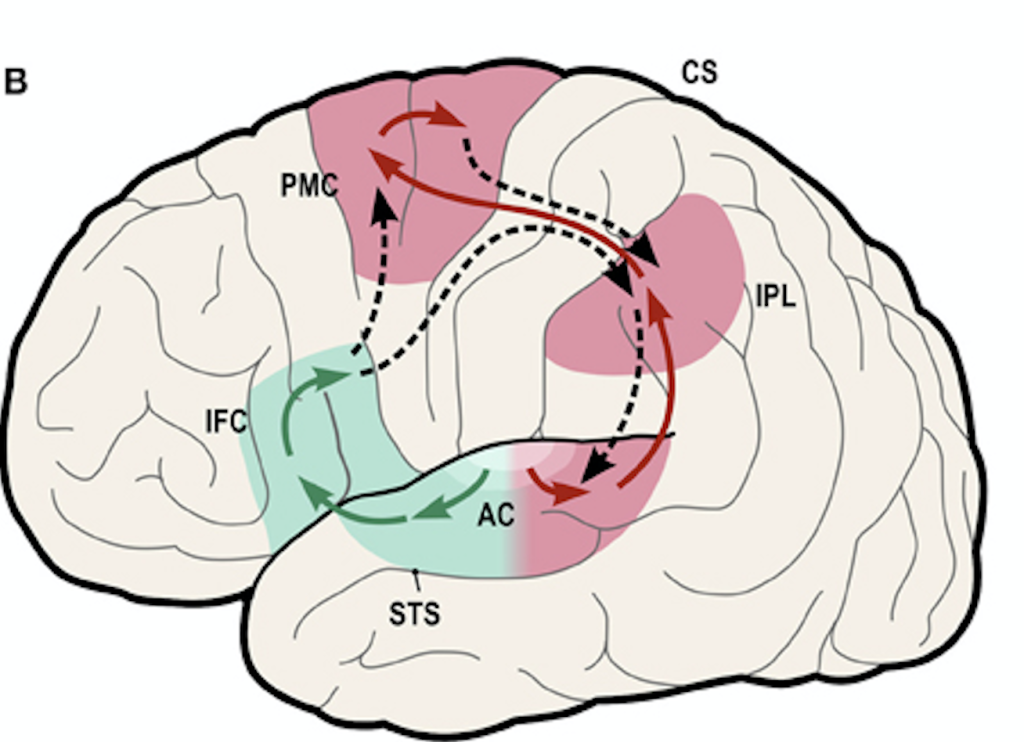Hearing Loss and Central Auditory Processing
61
Learning Objectives
Know what “what” and “where” pathways represents.
Be able to describe their technical names.
Be able to discuss evidence for how these pathways were discovered.
Beyond the cortical representation of the A1 and the belt area lies the “what” and “where” pathways of the ear. Through modern neuroimaging studies as well as lesion studies, we know sound identity is represented in a more ventral extended network whereas sound location is represented in a more dorsal extended network. The following paragraph is from the OpenStax textbook on visual processing, but the general principles apply to auditory processing, as well!

The ventral stream identifies visual stimuli and their significance. Because the ventral stream uses temporal lobe structures, it begins to interact with the non-visual cortex and may be important in visual stimuli becoming part of memories. The dorsal stream locates objects in space and helps in guiding movements of the body in response to visual inputs. The dorsal stream enters the parietal lobe, where it interacts with somatosensory cortical areas that are important for our perception of the body and its movements. The dorsal stream can then influence frontal lobe activity where motor functions originate.
Provided by: Unniversity of Minnesota
License: CC BY 4.0CC LICENSED CONTENT, SHARED PREVIOUSLYOpenStax, Anatomy and Physiology Chapter 14.2 Central Processing
Provided by: Rice University.
Download for free at https://openstax.org/books/anatomy-and-physiology/pages/14-2-central-processing
License: CC Attribution 4.0

